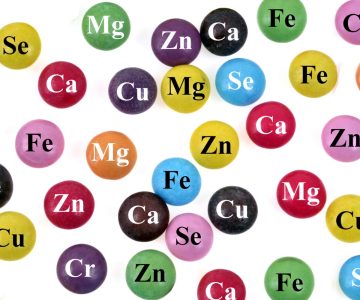Trace elements are essential dietary components for organisms. They must be ingested in very small amounts, unlike macroelements. Concentrations of specific trace elements within the body are usually <50 mg/kg body weight, with the exception of iron (National Research Council, 2005).
Current recommendations in animal feeding in regards to trace minerals, include total dietary concentrations. This is due to the highly variable concentration levels and bioavailability of plant-based foods which many times don’t meet animal needs(Suttle, 2010).
In ruminants, there are special recommendations regarding Cobalt in order to address specific requirements of rumen microbiota and promote cobalamin synthesis.
Special forms have also been commercialized in recent years. From which the most significant are probabbly nanoparticles (e.g. nano ZnO).
Within the European Union, feed additives require authorisation in accordance with Regulation (EC) No 1831/2003. The authorisation procedure must ensure that a feed additive is safe for: the animals, personnel handling the product, consumers and the environment. This implies that trace element supplements are used in sufficient quantities in order to minimize total dietary concentrations needed. Avoiding excess accumulation in animals, edible products and the environment.
Defining “bioavailability”
The term bioavailability is often used as a synonym for absorption or retention capacity. However, this is misleading as it implies that trace elements are 100% bioavailable as long as they are present as an available chemical compound within the gastrointestinal (GI) tract.
The content of essential trace elements in the body is actively regulated by the intestinal barrier through specific absorption mechanisms, as well as various absorption and excretion mechanisms according to their metabolic state (Windisch, 2002).
Therefore, the bioavailability of a trace element source can be defined as its potential to supply the physiological functions dependent on that specific element, within the animal’s metabolism(O’Dell, 1984).
These physiological functions are closely related to the organism’s total requirements and the kinetics of that element within the body. In regards to animal nutrition,the bioavailability estimate is related to the estimate of gross requirements, which is expressed as:
“the minimum concentrations of total feed required to provide sufficient bioavailable quantities under ad libitum feeding conditions.”
Basic concepts of trace element metabolism
Keep up to date with our newsletters
Receive the magazine for free in digital version REGISTRATION ACCESS
YOUR ACCOUNT LOGIN Lost your password?
